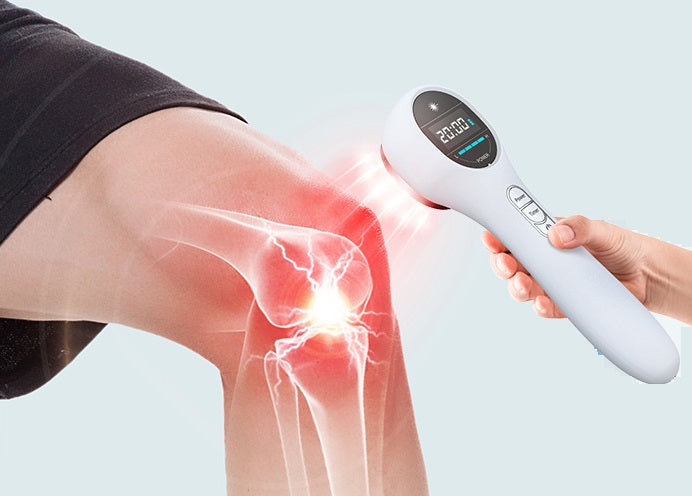Unveiling the Potential of Red Light Therapy for Testosterone
As men age, the natural decline in testosterone levels can lead to a cascade of unwelcome symptoms, including fatigue, diminished muscle mass, reduced libido, and even mood swings. This decline can significantly impact quality of life, leaving many men seeking solutions. Enter red light therapy (RLT), a non-invasive approach gaining traction for its potential to support healthy testosterone levels. But does RLT truly deliver on its promises? Let's delve into the science, explore the potential benefits, and uncover how it might work its magic.
Understanding the Science Behind Red Light Therapy
Red light therapy, also known as photobiomodulation, leverages specific wavelengths of red and near-infrared light to stimulate cellular processes within the body. This light energy is absorbed by mitochondria, the powerhouses of cells, triggering a cascade of beneficial effects that can extend beyond testosterone levels.
How Red Light Therapy May Boost Testosterone
The potential for red light therapy to influence testosterone levels stems from several key mechanisms:
- Stimulating Testosterone Production: Some studies suggest that RLT might directly stimulate testosterone production in the testes. The light energy could potentially activate key enzymes involved in testosterone synthesis, leading to an increase in hormone production.
- Enhancing Blood Flow: RLT's ability to improve blood circulation is a crucial factor. Increased blood flow delivers more oxygen and nutrients to tissues, including the testes, which is essential for optimal testosterone production.
- Reducing Inflammation: Inflammation can negatively impact testosterone levels, creating a hostile environment for optimal hormone production. RLT's anti-inflammatory properties may help alleviate this issue, creating a more conducive environment for healthy testosterone synthesis.
The Evidence: What Does Research Tell Us?
While research on red light therapy and testosterone is still ongoing, several studies offer intriguing insights into its potential. Let's examine some of the key findings:
- A Study in Photomedicine and Laser Surgery: This study, published in 2018, demonstrated that men with low testosterone experienced significant improvements in their levels after undergoing red light therapy treatments. This finding suggests a potential therapeutic benefit for men struggling with age-related testosterone decline.
- Research in the International Journal of Endocrinology: Another study, published in 2020, focused on men with erectile dysfunction, a condition often linked to low testosterone. The study found that RLT not only helped increase testosterone levels but also improved sexual function in these men, highlighting a potential dual benefit.
It's crucial to emphasize that these studies, while promising, are relatively small and more research is needed to confirm the effectiveness of red light therapy for testosterone. However, the initial evidence is encouraging and warrants further investigation.
Beyond Testosterone: The Broader Benefits of Red Light Therapy
The potential benefits of red light therapy extend far beyond testosterone, offering a holistic approach to improving overall well-being. Here are some of the key areas where RLT has shown promise:
- Muscle Growth and Recovery: Red light therapy can promote muscle protein synthesis, leading to faster muscle growth after exercise. It can also reduce muscle soreness and inflammation, enabling faster recovery and enhanced performance.
- Pain Relief: RLT has demonstrated efficacy in reducing chronic pain associated with conditions like arthritis, back pain, and fibromyalgia. The anti-inflammatory and tissue-healing effects of red light may play a significant role in pain relief.
- Improved Skin Health: Red light can stimulate collagen production, leading to smoother, firmer skin, and a reduction in wrinkles. It can also promote wound healing, accelerating the repair process for cuts, burns, and other skin injuries.
- Enhanced Mood and Sleep: Some studies suggest that RLT may improve mood, reduce stress levels, and enhance sleep quality. The increased energy production and reduced inflammation associated with RLT may contribute to these benefits.
Harnessing the Power of Red Light Therapy: Practical Considerations
Red light therapy devices are readily available, ranging from handheld devices to full-body panels. The choice of device depends on individual needs and preferences. It's important to choose a reputable device with adjustable wavelengths and power settings. Always consult the manufacturer's instructions for safe and effective usage.
How to Use Red Light Therapy Effectively
The effectiveness of red light therapy depends on several factors, including the wavelength of light used, the duration of treatment, and the frequency of sessions. Here are some general guidelines:
- Wavelength: Look for devices that emit red light in the 630-660nm range and near-infrared light in the 810-850nm range. These wavelengths have been shown to be particularly effective for stimulating cellular processes.
- Treatment Duration: Start with short sessions (5-10 minutes) and gradually increase the duration as needed. It's best to listen to your body and adjust accordingly.
- Frequency: Most people benefit from daily or every other day treatment. However, the optimal frequency can vary depending on individual goals and health conditions.
Important Considerations Before Starting Red Light Therapy
While red light therapy is generally considered safe, it's always wise to consult with a healthcare professional before starting any new therapy, especially if you have underlying health conditions. Your doctor can help determine if RLT is appropriate for you and offer guidance on proper usage.
Additionally, keep in mind that red light therapy should not be considered a cure-all. It's best approached as a complementary therapy that can support overall well-being and potentially enhance testosterone levels.
Conclusion: A Promising Path to Enhanced Well-being
Red light therapy holds exciting potential as a natural, non-invasive approach to supporting healthy testosterone levels and improving overall well-being. While more research is needed to fully understand its long-term effects, the initial evidence is encouraging. If you're considering red light therapy, consult with your doctor and choose a reputable device for safe and effective use. Remember, a holistic approach to health, including a balanced diet, regular exercise, and sufficient sleep, is essential for optimal well-being.
